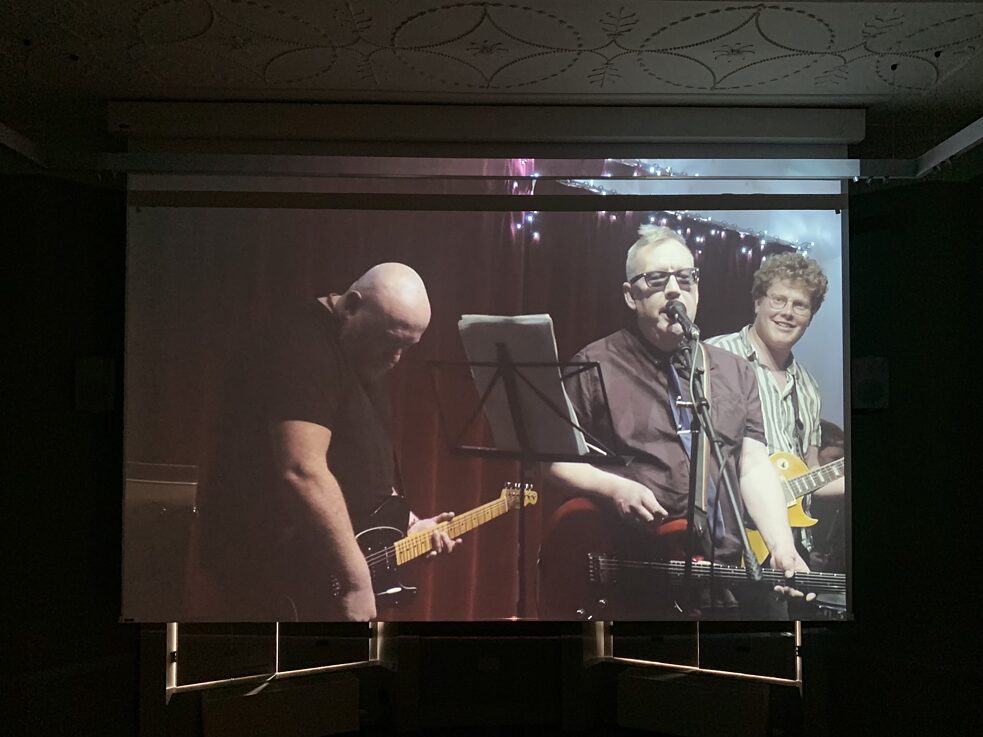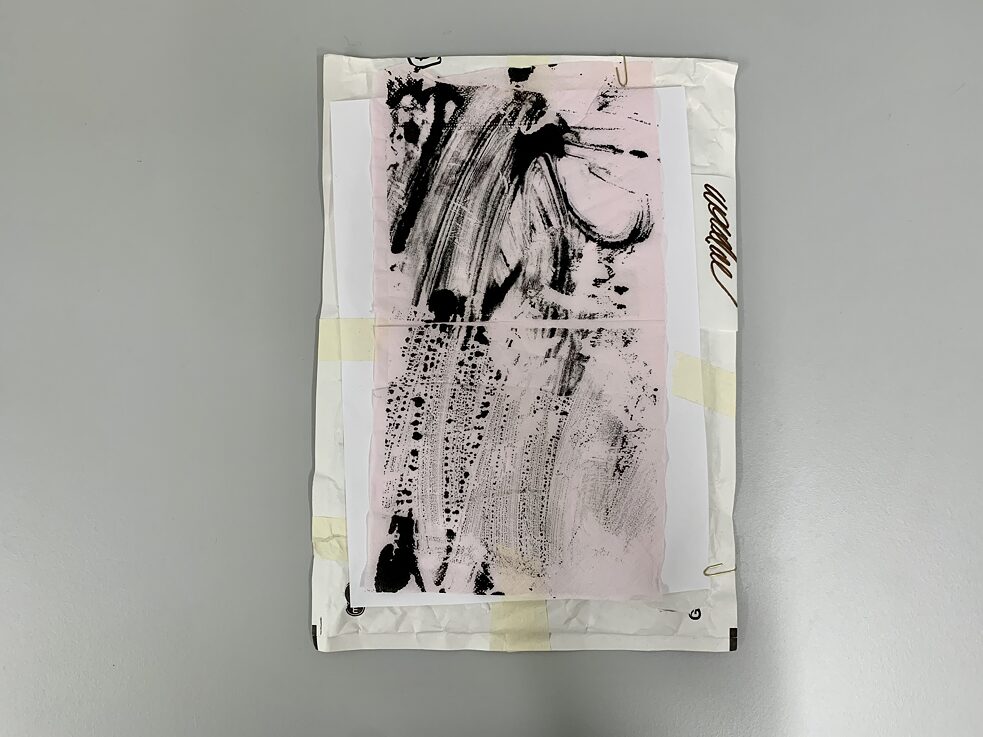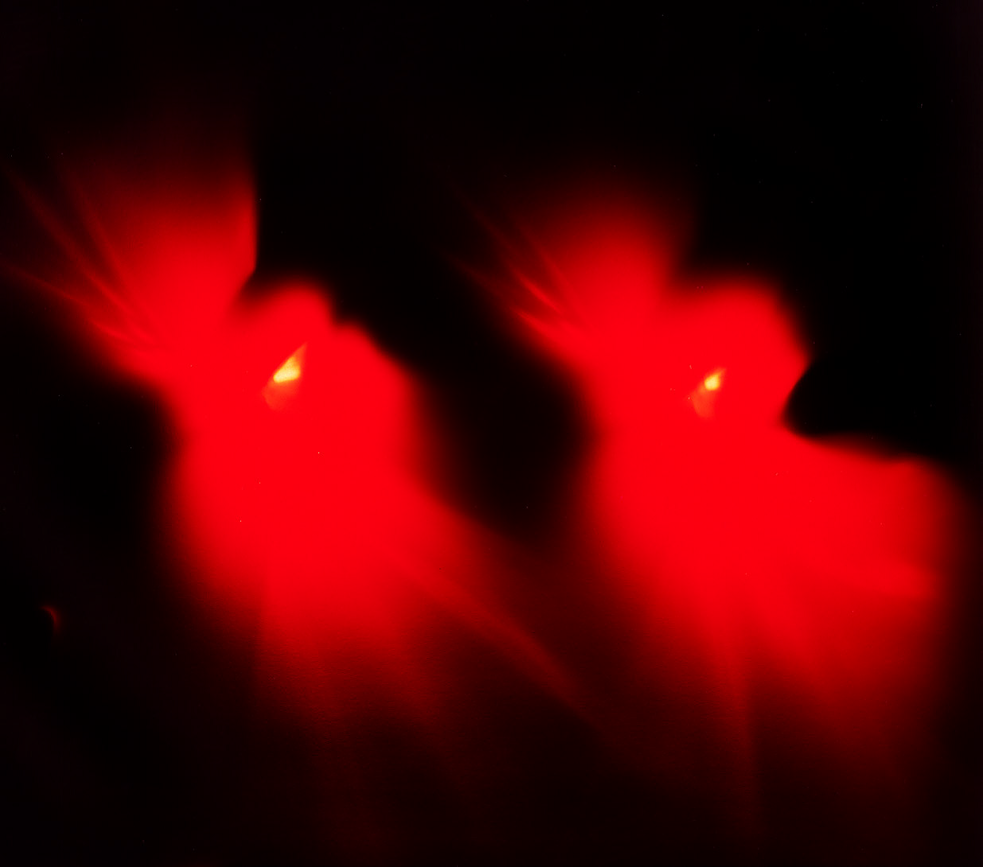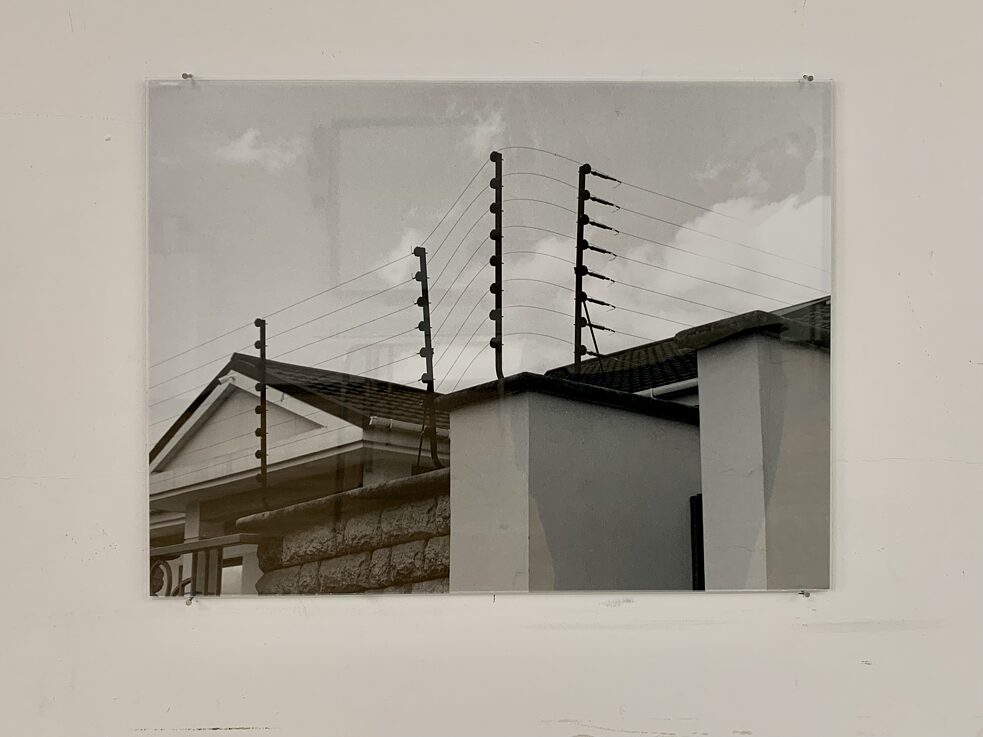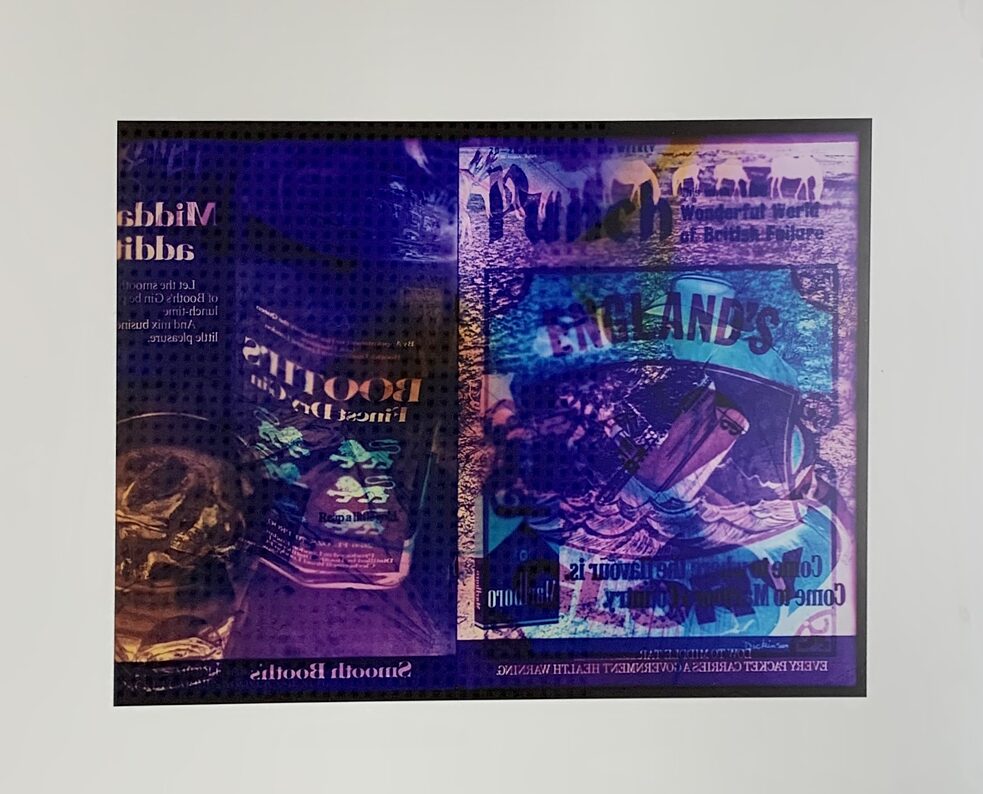sleepwalking
Mit Arbeiten von Rachel Ashton, Emma Rosenzweig, John Hussain Flindt, Paul Haas, Gabriel Possamai.
10. Juni bis 9 Juli 2022Sleepwalking ist die sechste und letzte Ausstellung des Goethe-Instituts im Rahmen des Projekts The German School.
Lift, lift, lift, lift up to that oh-so-high floor from which, each morning, everybody else seems to come down, chattering as they do about its strange changing shapes, its sensationless evocation of what the boring call the void and the others call the other. It is not what it looks like. It is not even a room. It is a figment, but not a figment of your self, not a jigsaw piece found under the sofa or stuck between your two front teeth. This figment swallows you whole, and has the appetite for more. And it walks, or rather, it drifts, or rather, it moves. And you must move with it, you who are not you anymore, but are rather a part that makes the sum. So no more worthless offerings, no more words to weld your thoughts with. Your thoughts are not yours anymore, let alone your words. To attend to your duties this night, we require your simplicity. You need only walk as you always have done, do your best to forget any sense of your ownness, keep your mouth shut. You need only look and listen. And you need only be swallowed, falling further and further down.
Rachel Ashtons Film Living too Late, der im Auditorium des Goethe-Instituts gezeigt wird, spielt im kleinen Küstenort Borth im Norden von Wales. Der Film thematisiert die komplexen Beziehungen der Küstenumgebung und der Menschen, die dort leben. Im Zentrum steht die Beziehung zwischen Ted und Graham – zwei alternden Punks, die durch ihre Freundschaft und zum Teil düstere Umstände verbunden sind.
Emma Rosenzweig präsentiert ihren Film The Period und eine Reihe von Zeichnungen. The Period ist eine filmische Collage, basierend auf animierten Ausschnitten aus Disneys pädagogischem Film Die Geschichte von der Menstruation (1946) sowie auf Audiomaterial aus Der Exorzist (1973). Zusammen mit drei zusammenhängenden Zeichnungen hinterfragt das Werk die ambivalente Darstellung des Geschlechts in Filmen, mit denen Jugendliche aufwachsen.
John Hussain Flindt präsentiert eine Reihe analoger Fotodrucke. Das analoge Fotopapier wurde direkt unter die Seiten des britischen Satiremagazins Punch platziert. Es entstehen umgekehrte Kopien des Inhalts – Illustrationen, die 1857 während des Indischen Aufstands gedruckt wurden. Durch die Kombination imperialistischer Bilder und alchemistischer Dunkelkammer-Techniken zeigt das Werk eine Geschichte westlicher Bildproduktion und Repräsentation in Bezug auf eine universelle soziale Geschichte und die Konstruktion von Identität.
Prabon Greenfields von Paul Haas ist eine analoge Fotoreihe, die in Afrika aufgenommen wurde. Prabon Greenfields ist der Name einer bewachten Wohnanlage in Kumasi, Ghana, die als „Oase in der Wüste“ bezeichnet wird. Haas stand eines Tages unangekündigt mit seiner Kamera und einer Filmrolle vor dem Sicherheitstor und durfte – vermutlich dank seines europäischen Akzents und seiner Erscheinung – durch die Wohnanlage streifen und die „Infrastruktur“ dokumentieren. Die gezeigte Reihe von Abzügen ist das Ergebnis dieses Prozesses.
Gabriel Possamai verwendet das Zitat "A man occasionally finds something that another man has been actively and desperately seeking for his entire life" aus dem Roman The Eyes of the Overworld (1966) von Jack Vance, um Fragen von Wert und Zufall in die künstlerische Praxis einzuführen. Für sleepwalking stellt er eine Reihe von Collagen aus verschiedenen fragilen und wegwerfbaren Materialien aus, die ein Archiv des Sammelns repräsentieren.
Zurück
